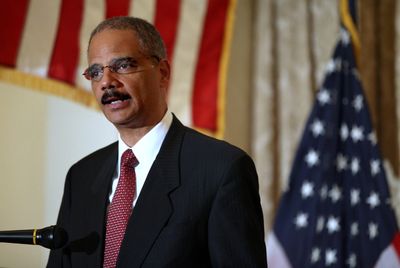Interrogation memos released
Documents detail tactics approved for use on detainees

WASHINGTON – Justice Department documents released Thursday offer the fullest account to date of Bush administration interrogation tactics, including previously undisclosed strategies of slamming a prisoner into a wall and placing an insect in the cell of a detainee terrified of bugs.
Authorities said they will not prosecute CIA officers who used harsh interrogation techniques with the department’s legal blessing. But in a carefully worded statement, they left open the possibility that operatives and higher-level administration officials could face jeopardy if they ventured beyond the boundaries drawn by the Bush lawyers.
The four memos, dated from 2002 to 2005, contain few redactions, despite a fierce battle within the highest ranks of the Obama White House about the benefits of releasing the information. Intelligence experts said the documents could ignite calls in Congress and among international courts for a fresh, independent investigation into detainee treatment.
The documents lay out in detail a series of practices intended to get prisoners to share intelligence about past wrongdoing and future attacks. The legalistic analysis under anti-torture laws and the Geneva Conventions is at odds with the severity of the strategies, which range from 11-day limits on sleep deprivation to nude shackling and waterboarding.
Step by step, experts considered the legality of slapping prisoners’ faces and abdomens, dousing them with water and confining them in a small box, with the last strategy limited to two hours. The techniques were designed to inspire “dread,” according to a footnote.
Some of the practices were used against more than a dozen detainees that authorities considered to be of particularly high intelligence value after the Sept. 11, 2001, terrorist strikes. But President Barack Obama and Attorney General Eric H. Holder Jr. reassured CIA employees anew Thursday that interrogators would not face criminal prosecution so long as they followed legal advice.
Both Obama and Holder for months have indicated a desire to look forward rather than conduct investigations that could alienate the intelligence community and incite partisan rancor. “This is a time for reflection, not retribution,” Obama said in a statement, even as he bemoaned the “dark and painful chapter in our history.”
A multiagency task force Obama established in his first days in office is evaluating other options for questioning such suspects and is exploring whether individual CIA officers may have committed crimes by overstepping the limits imposed by lawyers. “It would be unfair to prosecute dedicated men and women working to protect America for conduct that was sanctioned in advance by the Justice Department,” Holder said in a statement.
For the first time, officials said Thursday that they would provide legal representation at no cost to CIA employees subjected to probes by international tribunals or inquiries from Congress. They also said they would indemnify agency workers against any possible financial judgments.
CIA Director Leon Panetta told employees that the interrogation practices won approval from the highest levels of the Bush administration and that they had nothing to fear if they followed the legal guidance from the Justice Department.
For years, the documents had been sought by lawmakers, civil liberties advocates and defense lawyers for men detained in U.S. military prisons. Holder and White House counsel Gregory Craig advocated publishing the sensitive documents in their entirety, saying the move would fulfill the president’s campaign promises of transparency and underscore the new team’s break with the past.
The Bush Justice Department wrote three of the memos in 2005 in response to a request for legal advice from John Rizzo, senior deputy general counsel at the CIA, who wanted to know whether the agency’s procedures for questioning al-Qaida operatives complied with laws and international treaties. Those memos were prepared by Steven Bradbury, who led the Justice Department’s office of legal counsel, an elite band of constitutional scholars who offer advice to the executive branch.
A fourth document dates to August 2002 and was signed by Jay Bybee, who had served in the office of legal counsel before becoming a federal appeals court judge. That memo involves a single prisoner, alleged al-Qaida associate Zayn al-Abidin Muhammed Hussein, better known as Abu Zubaida, whose interrogations began in May 2002. Administration lawyers gave oral advice to CIA officials in July and offered written versions of their analysis that summer, giving rise to questions among congressional Democrats about whether officials who participated in the interrogation before the advice was proffered could face legal exposure.
Interrogators told Justice Department lawyers that they sought to exploit Abu Zubaida’s fear of bugs by telling him that they had put a stinging insect in a small, confined box where he was held for brief periods, when in fact they would introduce a harmless caterpillar instead. Intelligence officials said Thursday that they had not actually used the practice, which won approval from administration lawyers.
Another memo, from May 2005, signed by Bradbury, addressed how CIA officials could employ different combinations of techniques, including a practice known as walling, in which interrogators would press a prisoner’s shoulder blades against a fake wall, producing loud noises.
The memos were released as part of a longstanding case filed by the American Civil Liberties Union and the Center for Constitutional Rights.